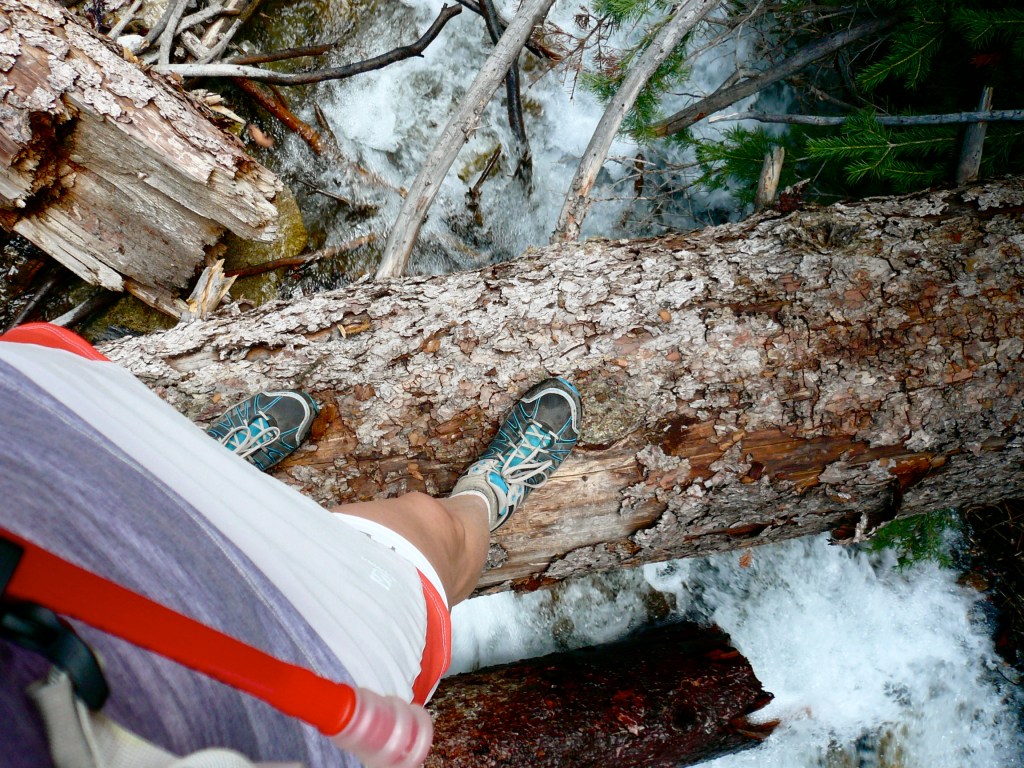When buying road-running shoes, one of the key considerations is whether a shoe is categorized as stability, neutral or motion control. With few exceptions, though, nearly all trail-running shoes are neutral shoes. So, when shopping around, there’s a different set of considerations to keep in mind.
Beyond the obvious—that a pair of shoes should fit well—here are five key considerations when choosing your ideal trail-running shoe.
1. Tread
More aggressive tread is the biggest differentiating factor between trail-running and road-running shoes.
- Generally speaking, the deeper the lugs (the “cleats” on the outsole) and the wider spaced they are, the better traction a shoe will give you in mud. Note, though: Deep lugs, 5mm–7mm in height, can be uncomfortable to run with on pavement or even firm dirt.
- If you primarily run on hard-packed trails, or plan to use a shoe for both trails and roads, look for one with shorter (2mm–4mm), more closely spaced lugs.
- If you plan to run on a lot of gravel or rocky trails, look for the phrase “sticky rubber” in the outsole description. This specialized rubber improves grips on rock.

2. Cushioning
This aspect of running shoes, trail and road alike, has seen the most change in recent years. After the 2009 publication of Christopher McDougall’s bestseller, Born to Run, many companies scrambled to make minimalist shoes with less cushioning and more so-called “ground feel.” More recently, a number of companies like Hoka One One have gone the opposite direction, making maximalist shoes with more cushion than ever. This is largely a matter of personal preference, but here are a few guidelines to get you started.
- You may want to opt for more cushioning if you: (a) want to wear a shoe for both trails and roads; (b) primarily run on hard-packed trails; or (c) plan to run especially long distances.
- You may opt for less cushioning if you: (a) run mainly on smooth, soft trails; (b) run primarily short distances; or (c) simply prefer a more nimble, close-to-the-ground feel.
- Many heavier-set runners or those who struggle with knee or joint pain have found that heavily cushioned shoes can reduce impact.
3. Rock Plate
Some trail-running shoes come with a rock plate or nylon shank built into the midsole that help protect your foot against rock bruising.
- If you plan to run on gravel or rocky, technical trails, it’s wise to find a shoe with this kind of built-in protection.
- Rock plates inevitably add weight to a shoe, so if you don’t need one—that is, if you run primarily on soft, smooth trails or road—it’s better to not be bogged down by unnecessary ounces.
4. Heel-to-Toe Drop
This factor didn’t become a mainstream part of the running-shoe lexicon until the last few years. Heel-to-toe drop, sometimes just called drop, describes how many extra millimeters of cushioning are in the heel versus the toe.
- 10mm–12mm is considered traditional drop, and offers ample cushioning in the heel for those who tend to heel strike; in other words, land on their heels when they run.
- The lower the drop, the more a shoe will help promote a midfoot strike—considered by many to be a lower-impact stride than a heel strike.
- The lower the drop, the more your Achilles will have to work—so beware that a lower-drop shoe (0mm–4mm) may require an adjustment period, especially when running uphill.

5. Waterproof Features
Some shoes come in waterproof versions. Often, though not always, they’re demarcated by the letters, “GTX,” short for “Gore-Tex®.” Others may have features like integrated gaiters that help fend off rain, mud or snow.
- Waterproof shoes are most helpful in cold weather, wet climates or when running on snow.
- In most other situations, they can be overkill. Waterproof membranes, even if labeled “breathable,” never breathe as well as a non-waterproof shoe. So, for example, if it rains occasionally but you live in a hot climate, opt instead for an airy, mesh shoe that dries quickly.
- Keep in mind: If water or snow enters the top of a waterproof shoe (as when crossing through a creek, for example), it can get trapped inside the membrane. Consider instead a quick-draining, non-waterproof shoe, or pair your waterproof shoe with a trail-running gaiter than prevents water or snow from seeping in at the collar.
After finding the right trail-running shoes, it is time to hit the trails.
For more information, watch “Trail Running Shoes: How to Choose.”
